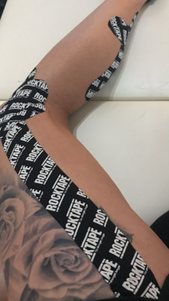What is soft tissue therapy?
Soft tissue therapy is more than just sports massage. It involves assessment, treatment, management and maintenance of soft tissue dysfunction and injury.
Pain and dysfunction may be caused by many factors including lifestyle, workplace and sports. Soft tissue therapy looks to
treat the muscles, fascia, tendons, ligaments and joints. This is by manipulation of the soft tissue involving massage and other advanced techniques. It addresses the underlying causes of injury
and dysfunction through treatment and rehabilitative prescribed exercises.
Soft tissue therapy works to:
-
Relieve pain.
-
Break down scar tissue from a previous injury.
-
Improve posture.
-
Improve flexibility and range of movement.
-
Assist injury prevention through early detection.
-
identify the root cause of discomfort.
-
aid recovery.
-
Optimise performance.
-
Optimise functional movement patterns.
Below are some of the many methods and techniques that may be used as part of a treatment plan.
Sports massage
- Increases circulation
- Assists the lymphatic system.
- Restores mobility to injured or tight muscle tissue.
- Relieves pain, fatigue and stiffness.
- Reduces stress and aids relaxation
- Prevents Injury
Muscle energy techniques
Soft tissue release
Myofascial dry cupping
Cupping increases blood flow to an injured area and fluid movement which will assist in recovery by potentially reducing swelling. The cups create a negative pressure which passively stretches myofascial tissue, resulting in an increased range of movement. Cups are also effective in decompressing an areas by breaking up and expelling congestion.
Myofascial release
Neuromuscular techniques
Taping
Injury management and recovery
- Swelling and inflammation
- Scar tissue formation
- Restoration of range of movement
- Restoration of strength and flexibility
- Correction of posture and biomechanics
- Proprioceptive control, the bodies ability to know where to place a limb without looking.


